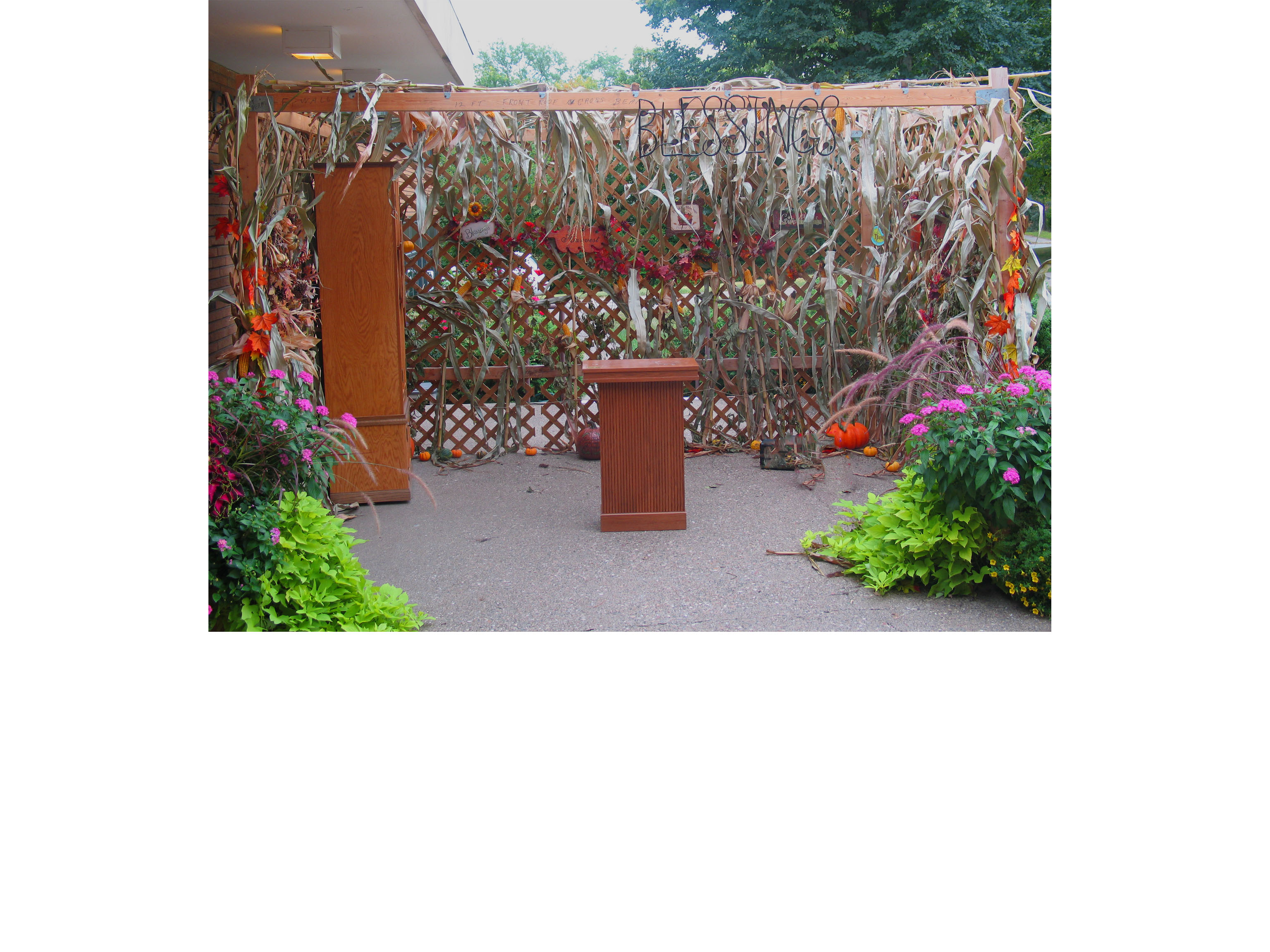
A lovely tradition at Temple Emanuel is to celebrate this holiday on the patio during the Friday night Shabbat Service closest to the holiday. Members of both Beit Shalom congregations and children from our Religious School help build and decorate a three-sided hut called a sukkah. During the service it is our tradition to lift and shake a palm branch, three branches of myrtle, two willow branches (the lulav) and a citron (the etrog) in four directions (north, south, east, and west) Following this creative service we honor all of our new members from the immediate past year with a special dinner. Sukkot is often referred to as zeman simchateynu, the “season of our joy.”
This is one of the most well-attended and inspirational services and holiday dinners enjoyed by our congregation. We hope you will join us by contacting the Temple office on
563.326.4419 or Email: Temple Emanuel
More About Sukkot
Sukkot, a Hebrew word meaning “booths” or “huts,” refers to the Jewish festival of giving thanks for the fall harvest, as well as the commemoration of the forty years of Jewish wandering in the desert after Sinai, the Exodus from Egypt. Symbolically, the Sukkah represents the portable huts the Hebrews lived in while moving throughout the desert.
Sukkot is celebrated five days after Yom Kippur on the 15th of Tishrei and is marked by several distinct traditions. One tradition, which takes the commandment to “dwell in booths” literally, is to build a sukkah. A sukkah is often erected by Jews during this festival, and it is common practice for some to eat and even live in these temporary dwellings during Sukkot. Many Jewish families in our community still build a sukkah at their home today. This also commemorates the agricultural season which falls at the end of the autumn fruit harvest.
The sukkah has at least 3 sides and is open on the top. We cover our sukkah with cornstalks which provides some protection, but also open so the stars can be seen. Usually it is decorated by the children of our congregation with hard-skinned fruit and vegetables of the fall season.

